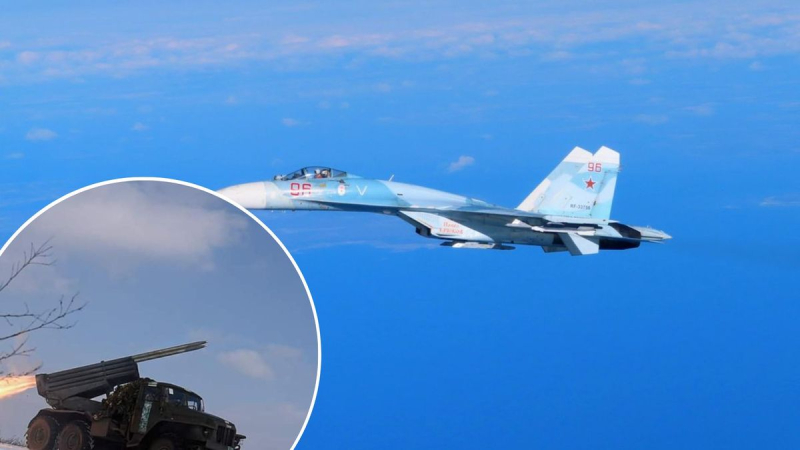
Publication author
Ivan Kirichevskiy
Back in November 2022, the British Royal Institute for Defense Research published a study on the war in the skies over Ukraine. It was useful for Western countries to help us more strongly with air defense systems.
How Russia used “flying aircraft”
Well, now this study has its own therapeutic effect, in order to understand how it happened that the Russians in the first days of the war announced the complete “destruction of our aviation and air defense”, then they announced this several more times, and in the end they themselves lost more 300 aircraft and about 300 helicopters.
If we add other data already known from open sources, we will see the following picture. As now, and at the beginning of a full-scale invasion, Russia had more than 700 aircraft and helicopters on the border with Ukraine.
For the first strike on February 24, 2022, the Russians were able to attract only 350 aircraft, for which it took 2 hours only to set up and battle formation.
Russia planned the use of military aviation quite rationally. The occupation pilots were supposed to shoot exactly at those areas where the mechanized columns of Russian troops, a kind of “flying artillery”, were supposed to move. First, enemy aviators had to completely suppress our air defenses with the entire range of tactical cruise missiles, even the Kh-59. And only then use unguided bombs on the ground units of the Armed Forces of Ukraine.
They even cunningly planned the use of aviation in such a way as to overload our air defense – in the first days of the war, the rate of sorties was maintained at the level of 140 per day. Of these, only up to 25% were group, according to the calculation – our fighters and air defense systems will still not catch up behind single sides. On the whole, their strategy worked, given at least the fact that in the first days of the war, Russian planes flew deep into the territory of Ukraine at a distance of up to 300 kilometers.
Further, the occupiers “fell down” on what is called “lack of feedback” in political opinion, or more specifically – the lack of “objective control of hitting targets.”
In Ukraine, there is no more aviation on Russian paper
The Russian military directly in all their reports on all the objects of our military infrastructure declared as “destroyed”, without assessing what was damaged there at all. Therefore, they did not have our air defense “on paper”, but in reality, at least 10 Russian aircraft were shot down on the first day of the war.
Somewhere around March 3, 2022, the Russians decided to proceed with the terrorist bombing of Chernigov, Sumy and the suburbs of Kyiv. However, the invaders could bomb with impunity only until March 10, 2022, because it was at this turn that the first Western MANPADS were delivered, not only the American Stinger, but also the French Mistral.
As we can remember, somewhere around this time, the enemies began to actively fire cruise missiles at the civilian infrastructure of Ukraine. Here, the training that our anti-aircraft gunners received back in the fall of 2021 played a role. Therefore, the percentage of downed enemy missiles already at the start was kept at the level of 20 – 30%, which was very good, as for the then conditions for the operation of our air defense.
As our anti-aircraft gunners shot down another Russian aircraft, the Russians themselves lost flyers capable of waging an intense war in the air for a long time. Already in mid-May 2022, two factors converged simultaneously:
- the Russian army has already lost 200 aircraft (or 20% of all aviation concentrated for the invasion);
- lost almost all pilots with combat experience (and decided to save the rest).
Therefore, since June 2022, Russian tactical aviation prefers not to cross the front line at all and to use mainly cruise missiles for tactical aviation of the Kh-31 or Kh-59 types.
Russian air attack failed
Well, now, in February 2023, the Russians turned out to be incapable of the promised “large-scale air attack” by tactical aviation due to several factors at once.
For starters, of those 700 aircraft and helicopters that are on paper, in fact, not all can be used for combat. After all, this number includes:
- aircraft at airfields put on conservation;
- auxiliary boards of types A-50 or Il-22PP;
- transport aircraft and even Tu-134s, the exact purpose of which is not visible on the satellite;
- Su-57 and MiG-31BM, firing off their missiles somewhere in general over the territory of Russia;
- rare Be-12 and Il-38 at airfields in the temporarily occupied Crimea or Kuban.
In addition to the drop in the quality of the flight crew, the Russians began to accumulate problems with the technical condition of combat aircraft. Because of which, for example, the next Su-25 is wound up on power lines somewhere in the Belgorod region.
No, this does not mean at all that Russian aviation will fail in 2-3 weeks, as Cooper has already written. But Russian aviation is not capable of repeating the horrors of the first days of the war.

